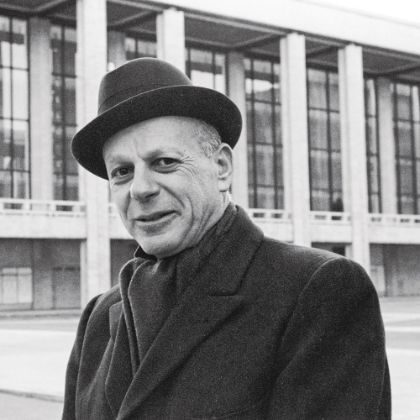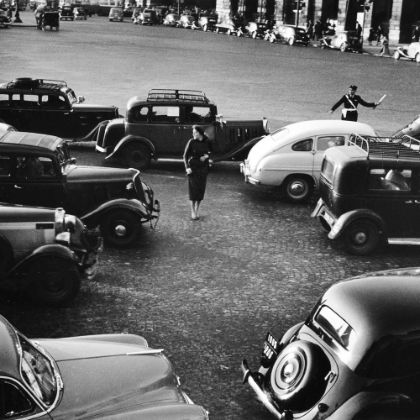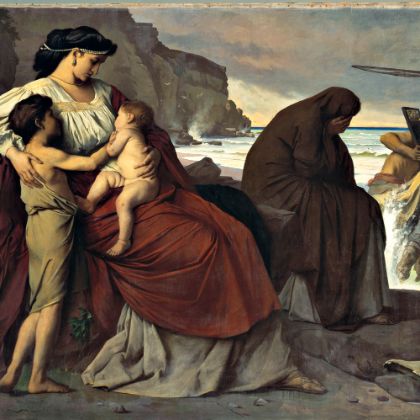Pat Metheny collaborates with the Los Angeles Guitar Quartet.
By Bradley Bambarger
The Los Angeles Guitar Quartet had just premiered the biggest work of its career, the nearly half-hour Road to the Sun, composed for the group by jazz guitar icon Pat Metheny. Most witnessing the LAGQ’s autumn performance at the University of Denver, with the attendant exhilaration and applause, probably considered it business as usual. After all, the LAGQ had helped make its name in the mid–Eighties with an arrangement of Manuel de Falla’s 1915 ballet El Amor Brujo, a sizable work that revealed the young group’s ambitions in pioneering a modern guitar quartet; the LAGQ played not only fresh arrangements of old music over the decades but also newly commissioned works, as the foursome influenced classical guitarists around the world to form their own quartets. But even for a group renowned for its precision — and an ability to cross genres with aplomb — the LAGQ had never encountered a composer quite as painstakingly devoted to achieving the sound in his head as Metheny. The premiere ended up more of a dress rehearsal, with much labor ahead.
Before the LAGQ performed Road to the Sun again a week later at New York City’s 92nd Street Y, Metheny sent the group a ten-page email that detailed enhancements in phrasing and dynamics measure by measure in a nine-hundred-and-thirty-four-bar piece, often involving subtleties difficult to convey in even a meticulous score. So he joined the quartet for a five-hour joint rehearsal the night before the Manhattan concert, picking up his guitar to show the classical performers the subtleties of a strumming style as unfamiliar to them as their more formal disciplines were to him. They also had to refine a section that entails some improvisation for the four players (not to mention running a plectrum along their strings for atmospheric effect). Half the LAGQ was comfortable improvising, while two were sticking to solos that Metheny wrote out for them. Ultimately, the challenges felt like opportunities, and the New York performance turned out closer to what Metheny had envisioned.
About that music, William Kanengiser — one of the founding members of the LAGQ, alongside John Dearman and Scott Tennant (with Matthew Greif joining in 2006) — says: “Road to the Sun has Pat’s voice from the start: that straightforward melodic beauty, the richness of the harmony, the groove of the rhythms. There’s also an almost symphonic integrity to this piece in its thematic and harmonic relationships, the way the motives are developed to tell a story. But one of the things that was most striking when I first saw the music was that our parts are listed by our names — Bill, Scott, John, Matt — and not Guitar 1, Guitar 2, et cetera in the classical manner. Pat was thinking of us as individual players, and had written to each of our particular sounds and strengths. That’s a jazz way of thinking.”
It’s a truism that the best improvised music often sounds as if it were composed, while many great compositions sound as if they were improvised — a dichotomy Metheny hears even in unlikely places. “I heard Tristan here at the Met the other night, and I felt the improvisation in there — you know, you could kind of hear Wagner just doin’ it,” says the guitarist, who lives on New York’s Upper West Side, near the Metropolitan Opera. “Improvisation and composition are similar things, just done at different temperatures,” Metheny continues. “Sitting here in my music space working at room temperature so to speak, I can think in a considered way, should this be an E-natural? In a theater on any given night, with the drummer going and two thousand people there, man, that’s a-hundred-eighty-degrees Fahrenheit, on the fly. I love both. And no matter what the circumstances, it’s especially fun and satisfying when you can offer whatever notes you come up with to exceptional musicians, which each player in the LAGQ is. That’s not to mention the collective thing they have — they’re a great band. Those guys are really tuned into each other.”
The Guitar and ‘Guitar–Ness’
Metheny’s first commission from a classical ensemble, the six-movement Road to the Sun resonates with the big-sky lyricism and metric drive that have often characterized the guitarist’s music since he made his debut as a leader with the classic ECM trio LP Bright Size Life in 1976, when the Missouri native was just twenty-one. That said, those who define Metheny strictly by the Grammy-hoarding, crowd-pleasing sound of his radio hits in the Eighties and Nineties — a technologically savvy brand of very contemporary jazz, whether accented by Americana melody or Brazilian rhythms — fail to recognize the full range of one of the most enduringly driven musicians of the past forty years.
To wit: Metheny recorded Steve Reich’s landmark Electric Counterpoint in 1987 and a book of John Zorn pieces in 2013, not to mention his own long-form, electro-acoustic band suite The Way Up in 2005. He has pursued pure modern jazz with a series of left-of-center trios, as well as improvised along with his dizzyingly complex Orchestrion of mechanized instruments; he recorded an avant-electric solo freak-out and later a set of nostalgic acoustic pop covers. He collaborated expansively with elder jazz heroes Ornette Coleman, Jim Hall, Derek Bailey and Charlie Haden, as well as guitar peer John Scofield and next-generation piano star Brad Mehldau. Broad-minded from the start, the guitarist toured in Joni Mitchell’s band and even recorded a single with David Bowie. Metheny keeps devising new groups and tours them widely, though he recently made time to record with the trio of Cuong Vu, a former trumpeter in one of his bands; it made for one of the guitarist’s most exciting sideman appearances in years. Considering all that and much else, the ambition of composing a half-hour work for four classical guitars doesn’t seem out of character for Metheny — but it’s still a leap that not many jazz veterans would’ve taken.
Road to the Sun isn’t the first time Metheny’s music has been heard in the classical realm. He speaks fondly of Jason Vieaux’s Images of Metheny — a 2005 album devoted to arrangements of Metheny’s music for solo classical guitar. “I had heard Jason give Bach recitals that were the best I’ve ever heard anyone play Bach on the guitar. For me, just to be on his radar was surprising. I love his take on my music, the way he made the tunes his own. There have been a few things like that over the years. A lot of flamenco guys — like Vicente Amigo, whom I love — have played my tunes. It’s interesting with the guitar and guitar-ness. As much as I’m a guitar player, I’m not really that kind of a guitar player. So to have guitarists at that level find interest in my music is mind-blowing for me.
“One of Pat’s frequent directions in rehearsals was ‘groove hard.’ When we got there, to hear Pat say,‘OK, that’s grooving’ — that’s a high compliment.”
“My relationship with the guitar has always been almost casual,” Metheny continues. “When I first started making records, I had only been playing the guitar for a few years, self-taught. Now I’ve been playing the instrument for almost fifty years, and there are things about the way I play that are recognizable to people, but the guitar has always been more of a musical output device for me. I’ve never really formalized what it is I do on the guitar, and for most of my writing, I actually use the piano, as that’s a much more logical universe than the odd geometry of guitar-thought.
“So in composing Road to the Sun, which I did on the guitar, I had to ask myself, what exactly do I do here — how am I getting from this to that on the instrument? Coming up with answers to that question was an enriching experience. Then there’s the fact that although I have written a lot of notes for people over the years, it’s often writing — even in my long-form pieces — to set up environments for improvisers. That wasn’t the case with Road to the Sun, of course, but I still wrote with an improviser’s mind: If I were going to solo over these chords, where would I go?”
Like Kronos, for Guitars
The LAGQ came together in 1980 at the University of Southern California, where they were protégés of Pepe Romero, a member of Spain’s world-famous Romero family of guitarists. By the Nineties, the group was releasing a string of Telarc albums featuring custom arrangements of Bach, Tchaikovsky and Rodrigo, along with forays into Latin American and Brazilian music — and new works. The great guitarist–composer Sergio Assad wrote Interchange, a concerto for four guitars and orchestra, for the group. Ian Krouse, head of the composition department at the University of California, Los Angeles, has penned a sequence of key works for the quartet, ranging from Folias (channeling the hypnotic Baroque dance) to Labyrinth: On a Theme of Led Zeppelin. Krouse also contributed Music in Four Sharps, based on a theme by John Dowland, for LAGQ’s latest album, New Renaissance. Former LAGQ member Andrew York has also written many pieces for the group, with the foursome to premiere a score by him for guitar quartet plus guitar orchestra this spring.
One longtime fan and friend of the LAGQ is former Police guitarist Andy Summers, a fellow Los Angeleno. “I’ve known the group quite well for fifteen years or more,” he explains. “Each member is a virtuoso, but the LAGQ has played together for so long that their ensemble sound — this tight, focused, almost silky sound — has become not only identifiable but widely influential, raising the bar on what anyone thought was possible with four classical guitars. The Romero family was there initially, of course, but they were a kind of one-off. Not unlike the way the Kronos Quartet did with a generation of string quartets, it really was the LAGQ that inspired groups like the VIDA Guitar Quartet from the UK, the Brazilian Guitar Quartet, the Dublin Guitar Quartet, lots of them now.”
Metheny took direct notice of the LAGQ when the group recorded an arrangement of his ballad “Letter from Home” on Guitar Heroes, the quartet’s Grammy–winning crossover album, from 2004. He found the cover indicative of the LAGQ’s mix of flair and care. “A lot of my stuff tends to sound easier than it really is — a blessing and a curse,” he says. “Whenever someone just gets the notes right, I’m happy, because I often hear others get things wrong — like inversions, chords that sound minor but are actually major, and so on. But the LAGQ got everything right — it’s a really nice version.” As moved by Metheny’s writing as much as his playing, Dearman made overtures to him about composing for the group, and when the jazz star saw the LAGQ perform at a Montana guitar camp, he immediately envisioned ideas for a piece, like a movie in his mind. Aptly, Going-to-the-Sun Road in Montana’s Glacier Mountain Park inspired the title of Road to the Sun.
Classical guitarist Ben Verdery, professor of guitar at Yale University and artistic director of the 92nd Street Y’s Art of the Guitar series, says only time will tell whether Road to the Sun will prove the sort of hit piece that the LAGQ can program for years to come — and whether other groups will pick up on it. “Because Pat Metheny is who he is, and because of the scope and duration of the music, what he has created is undeniably a milestone in the guitar quartet literature,” he says. “Will it be another signature work for the group, like Bill’s Falla arrangement was early on? I think it has that potential. But you never know how listeners will take to a new work. How a piece finds its place in the repertoire depends not only on the relationship between the artists and the music but also between the music and the audience. It did feel like the performance at the Y was exciting for everyone, with the LAGQ playing on the edge of their seats.”
A Whole New Level
In writing for the LAGQ, Metheny had to come to grips with the fact that there are aspects to his natural way of playing the guitar — such as the way he frets certain notes over the neck with his thumb — that went too far against the grain of the LAGQ’s classical technique, forcing him to have to revoice certain chords. But the most challenging facets of Road to the Sun for the LAGQ were rhythmic, with elements instinctual for a jazz player like Metheny not necessarily so for a group of classical guitarists. “It seems funny that the rhythmic thing was trickiest, while the difficult classical-type guitar moves I put in there for them — things that I can’t really do myself — they just eat that stuff up,” the composer says.
One signature of Metheny’s guitar playing has always been constantly shifting inner dynamics, a way of hitting the strings that virtually heightens the limited sonic range of the instrument. These are subtleties derived from not only the phraseology of Wes Montgomery and Jim Hall but also that of Steve Reich and the Ramones. Such methods are hard to convey on the page, as “they’re about feel,” Metheny says. He demonstrated them to the LAGQ via recorded examples and by breaking out his own guitar at rehearsals.
“We’ve worked with composers who are detail oriented, but Pat takes that dedication to a whole new level,” Dearman says. “We spent almost twenty hours of rehearsal with him over rigorous sessions from Los Angeles to Denver to New York. He has a fully formed idea of exactly how the piece should sound. We spent a lot of time working on this one rubato section of four to six bars, and he told us that he would spend a day and a half working on something like that with his band — a day and a half on just a few bars! He would say, ‘My poor band . . . ’ But that exacting preparation pays off. And Pat’s right in that it isn’t always about technique — it’s often about just getting the right feel to be second nature.
“One of Pat’s frequent directions in rehearsals was ‘groove hard,’” Dearman adds. “When we got there, to hear Pat say, ‘OK, that’s grooving’ — that’s a high compliment.”
To Kanengiser, the limitations of even very specific notation became apparent regarding these “subtleties of the groove — the grooves within the grooves,” he says. “But with Pat’s coaching, we were able to get what he’s after. Then there’s this ‘phasing’ effect, this tight-but-loose quality he’s after with the strumming parts. We spent decades developing our ability to play together with a sort of seamless ensemble. But he didn’t want us to be too together. He wanted something freer, with the kind of rubato that’s part of his vernacular and makes the music more expressive.”
Even with all the rehearsals and initial concerts in the rearview mirror and a raft of LAGQ performances of Road to the Sun planned for seasons ahead, Metheny says: “I don’t see this as anywhere near done yet.” He’s mulling over multiple recording scenarios for the piece, as well as more than just finishing touches to the score. The “written-in-stone” future of a classical score has been his personal challenge to contemplate. But reflecting on the journey, Metheny says: “My favorite place to be has always been where I don’t know exactly what I’m doing — but where I have to learn. That’s where I’m happiest, most satisfied. Ultimately, though, this project — as different as it is — has felt organically related to everything else I’ve done. Really, from Bright Size Life to Road to the Sun, it all feels like one long tune to me.”

-

Master Builder
His compatriots made institutions of their music. William Schuman made institutions.
Read More
By Russell Platt -

Respighi: Beyond Rome
Respighi’s set of variations is cast away for his more
Read More
‘Roman’ repertoire.
By David Hurwitz -

Funeral for a Kindred Spirit
The beautiful stoicism of Brahms’s Nänie defies absolute categories.
Read More
By Thomas May